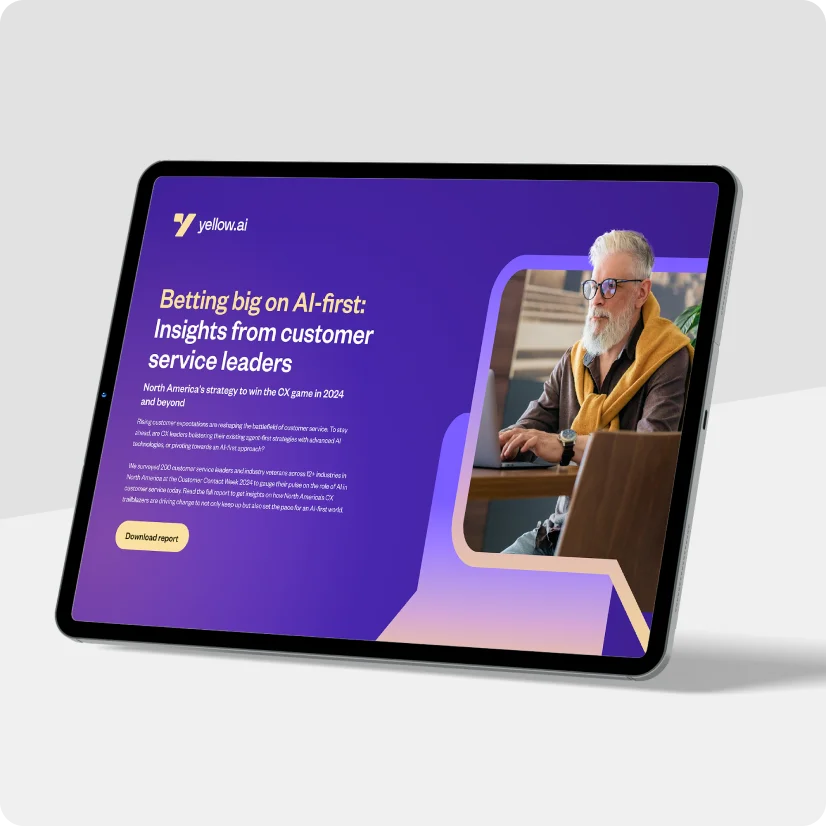Virtual assistants are available on every mobile device or in many households nowadays as they perform most human tasks with a simple voice command. Apple’s Siri, Microsoft’s Cortana, Amazon’s Alexa, and Google’s Assistant are all examples of well-built virtual assistants that use artificial intelligence, cognitive computing, and machine learning technologies.
How can a virtual assistant improve the total experience?
A virtual assistant’s experience depends on how well the product connects with the user. It is primarily achieved by companies like Apple and Amazon in their products through sentiment analysis and natural language processing.
The question is, how do you develop a virtual assistant to enhance the user experience?
You must at least add these two features to your virtual assistant to enhance the user experience.
1. Voice and command recognition
Most users want a hands-free experience when communicating with a virtual assistant. Users prefer to ask questions through their voice and not type the question into the device. You can add voice recognition to your virtual assistant through APIs.
An API is a software that lets applications or components of an application communicate with each other to send or receive data without manually entering the data.
2. APIs
Several open-source APIs are available on coding platforms that you can use to implement voice recognition in your virtual assistant. If you want to design the custom API to do the heavy lifting for you, you can add specific features such as voice-to-speech, text-to-speech, image processing and sentiment analysis.
Sentiment analysis lets the virtual assistant understand what the user is trying to convey. If it is a question or a command to perform a task, sentiment analysis and NLU (Natural Language Understanding) will do most of the job for your assistant.
List of most popular virtual assistants
Virtual assistants have come a long way from the IBM Simon developed in the early 1990s to the contemporary ones.
Dragon Systems, now acquired by Nuance Communications and Microsoft, created software in 1997 called “Dragon Naturally Speaking”. This software could detect and transcribe genuine human speech into a document at a pace of about 100 WPM. Naturally Speaking is still accessible for download and many doctors use it in the US and UK to type in medical records with their voices.
Here are some of the best virtual assistants today:
1. Siri
Siri is an AI-based virtual assistant from Apple, exclusive to all devices in its environment. Siri has been the virtual assistant in Apple devices for more than ten years with numerous beneficial features. It can mimic human speech, respond to questions conversationally and manage facets of your life while providing optimum privacy and security. Siri uses machine learning, artificial intelligence and Apple’s on-device machine intelligence.
2. Alexa
Developed by Amazon, Alexa is a virtual assistant you can access with your voice. Alexa evolved from a precursor called Ivona, created in Poland.
Alexa can play music, operate your smart home, answer queries, link you to your favorite services and even let you shop on Amazon. To respond to a query or command, Alexa waits for the command “Alexa” and executes the relevant function succeeding it. When asked a question, Alexa turns audio signals into text, allowing it to perceive information from various sources.
3. Cortana
Cortana is Microsoft’s virtual assistant
that leverages the Bing search engine. It helps the user perform various activities, such as answering queries and creating reminders. You can use Cortana for more advanced actions like filtering and searching through texts and email.
Microsoft has incorporated Cortana into several products, including Microsoft Edge, the browser accompanying Windows 10+. You can even use Cortana with voice recognition in Microsoft Edge to look up the business hours of your favorite restaurants, amusement parks and more. Cortana can also help you with shopping by finding coupons offered by retail stores.
4. Google Assistant
Google Assistant is Google’s artificial intelligence (AI) virtual assistant for Android smartphones. It works as a virtual personal assistant and performs several activities using a natural language processing interface. The Google Assistant employs voice control, cognitive computing and machine learning technologies to give the best results.
You can use Google Assistant to get news updates, check current weather conditions, check traffic conditions and follow route instructions with Google Maps. Apart from these functionalities, you can also use Google Assistant to answer queries via Google Search, create calendar events, set alarms and even connect home automation with Google Home.
5. Bixby
Bixby, developed by Samsung Electronics, is a virtual assistant with multilingual capabilities. The virtual assistant, which was first released for Samsung handsets, has now been extended to almost all Samsung devices, including Samsung televisions and even Samsung refrigerators.
Since its release, the smart virtual assistant has improved significantly. It has a fast response time and responds to orders more quickly. Bixby learns about the user through interactions. It will keep track of choices and present you with relevant options. It allows you to use apps, make phone calls, schedule things on the calendar and more.
How to develop a virtual assistant to boost total experience?
The development of a virtual assistant is a multi-step process.
1. Write user stories
To begin with, you must write down the user stories. These user stories will give you a detailed insight into what services a user would want from your virtual assistant. It is an informal, generic exposition of a software feature, written from the end user’s or customer’s point of view.
A user story’s objective is to communicate how a piece of work will provide a specific value to the client. User stories are a few phrases that define the intended goal in simple terms. They do not get into specifics. Specifications are made later when the workgroup has agreed on them.
2. Choose a programming language
Next, you should freeze the scope of your project and choose a programming language. Python may be a sound choice as it has many built-in artificial intelligence and machine learning libraries. You can choose to create your AI models in Python and then use another programming language to implement your models.
3. Narrow down on APIs
You should research the APIs that correspond to the functionalities you want your virtual assistant to provide. Many codes are available on online repositories such as GitHub to design your APIs.
4. Start development
Finally, you should start coding your virtual assistant, create a deployable version and refactor your code according to the existing bugs.
An alternative way would be to build one using a low-code, no-code platform that allows you to create an intelligent virtual assistant using pre-built templates for your specific use cases. This way, you don’t have to start everything from scratch or rely on developers, as the platform does most of the heavy lifting.
Conclusion
When developing a smart personal assistant, you must take care of the user experience since it is a core aspect of customer-brand engagement. You can create a better user experience by first writing the requirements of the typical user as user stories and then revolving the development of your virtual assistant around those user stories.
Using already available APIs, implementing a good user experience should be easy, provided you have clearly defined the functionality scope of your virtual assistant.
To learn more about how you can develop a fully-functioning virtual assistant without writing a single line of code, talk to our experts.


























